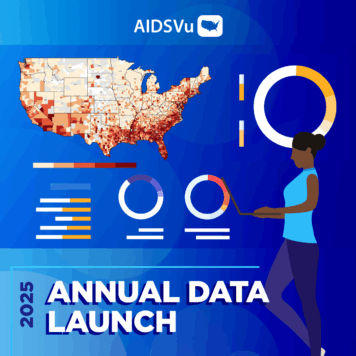Amy Justice, MD, PhD is the Principal Investigator on the Veterans Aging Cohort Study (VACS), the CNH Long Professor of Medicine and of Public Health at Yale University.
Q: According to Centers for Disease Control and Prevention (CDC), from 2014 to 2018 in the U.S., the largest percentage increase (51%) in the rate of persons living with diagnosed HIV infection was among persons aged 65 years and older. Can you describe the unique challenges older Americans may face regarding HIV prevention, testing, care, and treatment?
With respect to prevention, older adults with HIV learned about sexual practices prior to our society’s concerns around HIV. Back then, the focus was more on avoiding pregnancy than avoiding infections, which means that older adults today are less inclined to use barrier methods such as condoms to avoid infection. It is also functionally difficult for older men to use condoms, so those continuing sexual activity may not recognize that they are at risk for contracting or sharing HIV with their partners. HIV prevention is also complicated for older adults using PrEP. Older adults are already taking many medications, so adding additional antiretrovirals for people can add to polypharmacy, the concurrent use of multiple medications by a patient, and drug – drug interactions.
With respect to testing, there are two issues here as well. The first is getting providers who are not HIV specialists to think about HIV as a possible source of older adults’ symptoms. There are lots of different reasons for why older people experience fatigue, anemia, pneumonia, or other conditions. This is less true for younger individuals, so HIV is more likely to be considered as a possible cause for younger adults exhibiting such symptoms. We need to get primary care doctors to actively think about HIV in older adults and encourage older people to ask about HIV testing.
With respect to care, older people have other conditions besides HIV; they have multi-morbidity and polypharmacy. Thinking about how to optimize care and treatment for an older person with these conditions is different than thinking about care for an older person with HIV and no other conditions.
Q: Although HIV risk factors are similar for all adults, according to CDC, older people are less likely to get tested for HIV and are more likely than younger people to have late-stage HIV infection at the time of diagnosis. What are the underlying factors behind this testing disparity?
Older people are often not tested for HIV until they present with symptoms. An older person’s sexual practices may have changed substantially by the time they seek care. If the source of their HIV infection is from sex that occurred 5-10 years earlier, this risk factor may not be obvious at the time they present. If you ask about sexual practices now, you are not necessarily going to know about sexual practices 5-10 years earlier, and the same can be said for injection drug use.
Q: According to CDC, some of the same prevention challenges for HIV transmission for young people also apply to older adults. However, older adults are less likely to speak with doctors about sexual health and may require additional education and prevention information. How can we improve our messaging on HIV treatment and prevention options to be inclusive of older adults?
I think that more research needs to be done on the answer to this question: how comfortable are older adults when talking about their sexual health? We also need to recognize that there is a digital divide. A lot of helpful information is available electronically, but not all older people are equally comfortable accessing that information online. If there are older individuals living in nursing homes or communities, access to online information may differ as well.
Q: Improvements in HIV treatment have helped many people with HIV live longer, healthier lives. What does it look like to age with HIV? How have you seen the aging process and HIV impact your patients’ health?
It is important to recognize that not all older adults, regardless of HIV status, age the same way. As people get older, the differences within an age group increase with respect to level of health and functional abilities. Much of the diversity within an age group is influenced by prior health habits and various health challenges over an individual’s lifespan. Older adults who were diagnosed early before experiencing major effects of HIV and who suppressed the virus quickly are going to have much better outcomes than those who were not.
To some extent, HIV exacerbates all issues of aging: polypharmacy, multi-morbidity, functional status, cognitive function, and maintaining independence. These issues are true for everybody who is aging, but HIV increases the potential losses if one neglects disease management. HIV accentuates the aging process for people; it accentuates the risks of aging in that individual’s story. For some people, aging with HIV has been a story of multi-morbidity: relatively quick functional decline, cognitive decline, and other complications. For others, many people live very healthy lives: taking their antiretrovirals regularly and maintaining their suppressed virus. The drivers behind those differences involve time of treatment, other health behaviors, and genetics. Some people are much more predisposed to illnesses like diabetes, cardiovascular disease, and dementia. HIV only adds to the list and increases the chances that those vulnerabilities will be exposed. We need to put HIV in the context of all these lifestyle factors. We are witnessing today that when HIV is managed reasonably well, individuals can live longer.
Q: In 2018, you co-authored a study with the Veterans Aging Cohort on alcohol use and its association with HIV severity over time. What were the findings of this study and can you speak to the specific implications this might have for treating veterans and older people living with HIV?
My team and I completed several papers on the influence of alcohol use on aging with HIV. Over time, we have seen how liver disease appears as a common problem for people aging with HIV. HIV itself can cause liver disease but many people who have HIV also have Hepatitis C, which also causes liver disease. Then when you add toxicity from alcohol and medications, there are many insults to the liver.
It is important to realize that as one ages, one’s ability to handle alcohol decreases substantially. The amount of alcohol it takes to have an impact on liver function decreases as well. Even if it is a relatively modest amount of alcohol – maybe only two drinks a night – that quantity can interfere with other things once it interacts with medications. Our studies have repeatedly shown that the same number of drinks can have a much bigger impact on someone of similar age and functional status who has HIV than someone who does not have the virus.
Q: September 18th is National HIV/AIDS and Aging Awareness Day which serves as an opportunity to bring awareness to the growing number of Americans who are aging with HIV/AIDS. What is your message to the community on this day of recognition?
I think that it is important to underscore that this subject is largely a success story. Without the development of effective therapies to suppress the virus, we would not be able to observe the aging trends of HIV that we see today. We need to figure out how to continue optimizing the quality of life for people aging with HIV, especially considering comorbidity and polypharmacy factors.
There are tangible steps that people can do now to improve their quality of life later on. They can stop smoking. They can substantially curtail their drinking. We need to recognize that our abilities to tolerate these substances, even if we have used them most of our lives, decreases with age. Individuals living with HIV can take control of optimizing their health and quality of life as they age.




